As a cyclist, the last thing you want to worry about is your bike being stolen. Unfortunately, bike thefts happen often and can be a real headache for cyclists. A bike lock is one of the best ways to protect your bike from theft.
But choosing the right one can be overwhelming with so many different types of locks available on the market. Choosing the right bike lock is essential for keeping your bike secure and preventing theft. With so many types of locks on the market, it can be overwhelming to know where to start.
However, Here will help you navigate the many options and choose the perfect lock for your needs. We will discuss the different types of locks, how to choose the right bike lock you need for your bike, and other factors to consider before making your final decision.
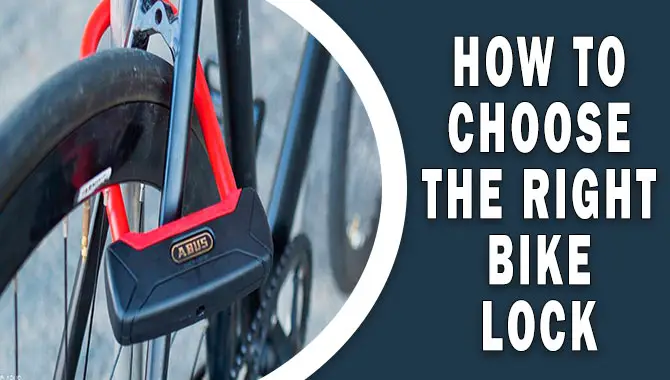
How To Choose The Right Bike Lock For Your Needs
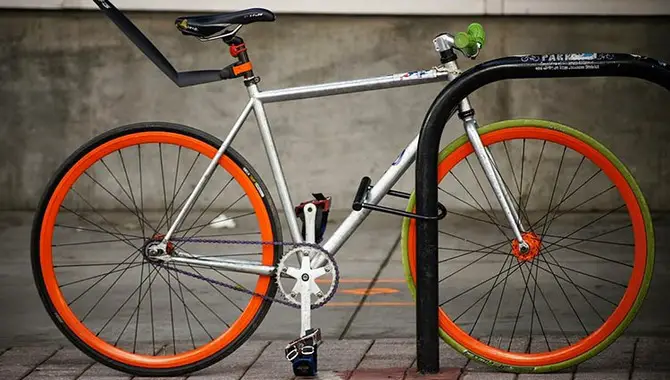
Choosing the right bike lock can be daunting, but it is important if you want to keep your bike safe and secure. With so many different types and brands of locks available, it can be difficult to know where to start. The key is to find a lock that is both strong enough to deter thieves and convenient enough for you to use on a daily basis.
However, Choosing the right bike lock is crucial for protecting your bike from theft. There are several factors to consider when selecting a bike lock, including the level of security you require and the type of lock that best suits your needs. Here are some tips for how to choose the right bike lock. By considering these factors, you can choose the right bike lock to keep your ride safe and secure.
1. Consider Your Security Needs

Choosing the right bike lock is essential for ensuring your bike is safe from theft. Your level of security needs will depend on where you park your bike. For high-crime areas such as New York, a u-lock (also known as a d-lock) by brands like Kryptonite, Abus, or Sold Secure would be the best option.
Chain locks work well when securing multiple bikes or locking your bike to larger objects. When using cable locks, ensure they have adequate thickness and avoid leaving them lying around freely, as they’re susceptible to cutters and bolt cutters used by bike thieves. Combination locks can be a convenient option but don’t provide the highest level of security compared to key-based locks.
2. Choose The Lock Type
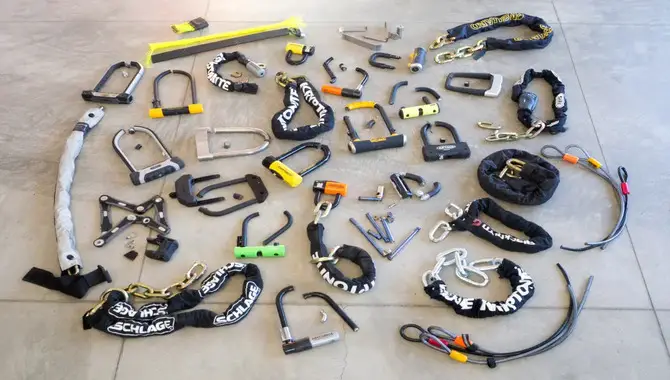
Choosing the right bike lock requires considering various factors like the level of security needed based on where you’ll park your bike, the type of lock that would best suit your bike’s frame, and its size and weight. Chain locks are perfect for securing multiple bikes or locking them onto larger objects.
If you’re in a high-crime area, U-locks offer the highest level of security by resisting bolt cutters. Do not forget that cable locks are lightweight and easy to transport but offer less protection than other locks. Look for a secure lock made from strong materials like titanium or hardened steel with additional features like alarms or anti-pick mechanisms.
3. Choose The Right Size And Weight
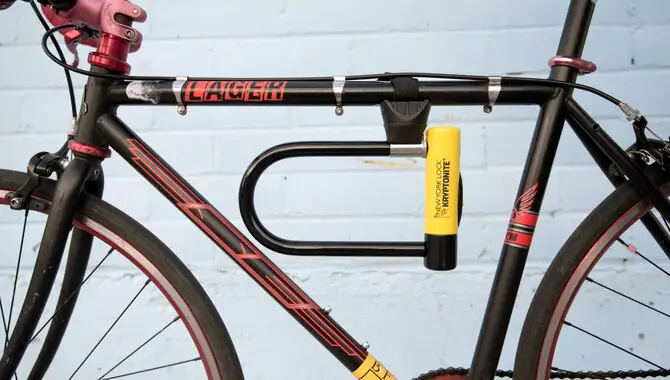
When finding the right bike lock, it’s important to consider its size, weight, and other factors like level of security and type of lock. Ensure the lock size covers your bike frame and an immovable object such as a bike rack. It should also enable you to securely fasten the front or rear wheel and other accessories like your saddle.
Although a heavier lock may offer more protection, it can be challenging to transport. Hence, look for a lightweight yet robust option that suits your needs. Choosing the right bike lock will ensure your cycling adventures are free from theft worries.
State Bicycle Co. Black Label 6061
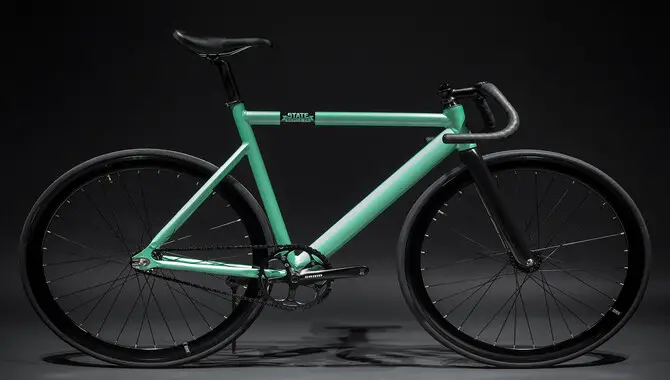
When selecting the right bike lock for your needs, it’s crucial to consider factors like the type of lock and its security level. The State Bicycle Co. Black Label 6061 is an excellent choice due to its secure locking mechanism and alloy steel shackle that offers the highest level of security.
Furthermore, this compact, lightweight lock has additional features like anti-theft protection, making it one of the best options. Always use the right tools when locking up your bike to avoid potential thieves who may use leverage or power tools like portable angle grinders to break open such locks.
What Are The Different Types Of Bike Locks?
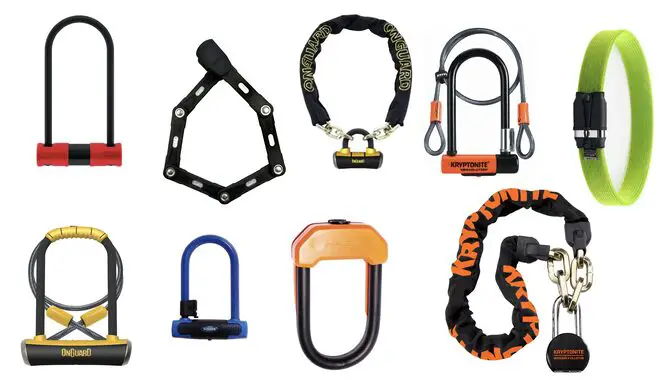
When choosing the right bike lock, knowing the different types available is important. The common types include U-locks, chains, cables, and folding locks. U-locks are solid and offer high security, while chain and cable locks are flexible and easier to carry around.
Folding locks are compact and easy to store while providing good security. Whichever type you choose, ensure it is made of durable material and has a strong locking mechanism to deter potential thieves. Here are some different types of bike locks.
1. Keyed Locks
When deciding on the right keyed lock for your bike, several factors must be considered to ensure maximum protection against potential thieves. The most secure lock is undoubtedly a U-lock, which offers a high level of security due to its sturdy construction. However, they can be bulky and heavy, making them less portable than other types of locks such as chain or cable locks. As a cyclist, you must balance portability and security level based on where you will park your bike.
To secure your bike properly, look for locks with a shackle thickness of at least 13 mm or higher rating from testing agencies such as sold secure or ART certification. Avoid cable locks with plastic coatings as they can be easily cut by bolt cutters or bike thieves’ power tools.
2. Combination Locks
If you’re wondering to choose the right bike lock for your needs, combination locks are an excellent choice. They offer a balance of security and convenience that many cyclists appreciate. To find the right combination lock for your bike, consider your security needs and the level of protection required to deter potential thieves.
You can choose from various lock types like U-locks or chain locks with steel shackles that resist bolt cutters or cable locks that are lightweight and compact but provide less protection against theft.
3. Cable Locks
Choosing the right bike lock is crucial to protect your bike from theft. When considering cable locks as a primary lock for your bike, portability is an advantage as they are lightweight and compact. However, you need to weigh this against the level of security that such locks provide against potential bike thieves equipped with bolt cutters or other cutting tools.
You can choose from different thicknesses of cables but remember that thicker cables offer better protection. Additionally, you should look for a secure locking mechanism that is difficult for potential thieves to pick or cut through. Note that no lock is completely theft-proof; hence, always lock your bike in a well-lit area and attach it to an immovable object.
4. U-Locks
When choosing the right bike lock for your needs, there are several factors to consider. One of the most important things to remember is the level of security you require. A U-lock is a great choice for cyclists looking for the highest level of security possible.
These locks are sold securely and provide excellent protection against theft. However, they can also be heavy and difficult to carry around when not in use. If portability concerns you, a chain lock or cable lock might be better. These locks are lightweight and easy to carry around on your commute. Consider details such as shackle thickness and locking mechanism type when selecting a U-lock.
5. Folding Locks
Folding locks are a popular type of bike lock that offers a great balance between security and convenience. These locks typically comprise several steel bars that fold together for easy storage while cycling. When locking up your bike, the bars unfold to create a secure barrier around your bike frame and a fixed object like a bike rack or pole.
When choosing a folding lock, it’s important to consider the level of security you need. Look for locks with thicker bars and strong, reliable locking mechanisms. It’s also worth considering the weight of the lock, as heavier locks can be more difficult to carry on longer rides.
Ultimately, the right folding lock for you will depend on your specific needs and preferences. Take some time to research different options and read reviews from other cyclists to find a folding lock that will keep your bike safe and secure.
How Much Security Do You Need For Your Bike?
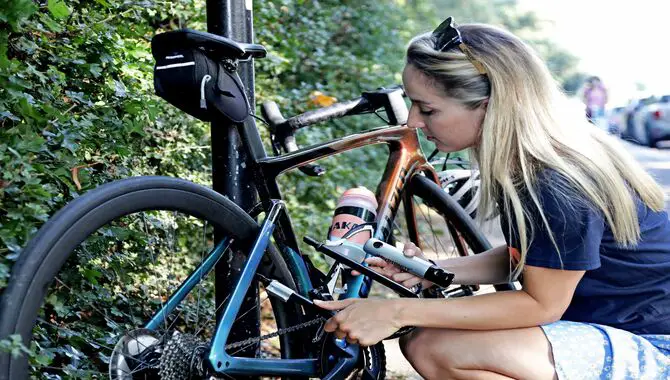
Determining how much security you need for your bike will depend on a number of factors, including where you live and how often, and where you ride. If you live in an area with high rates of bike theft or frequently park your bike in public places, investing in a higher level of security, such as a U-lock, may be worth the weight and inconvenience.
However, a lighter-weight folding lock or cable lock may provide sufficient protection if you primarily use your bike for short commutes or rides through low-risk areas. It’s important to assess your needs and make an informed decision when choosing a bike lock.
What Other Factors Should You Consider When Choosing A Bike Lock?
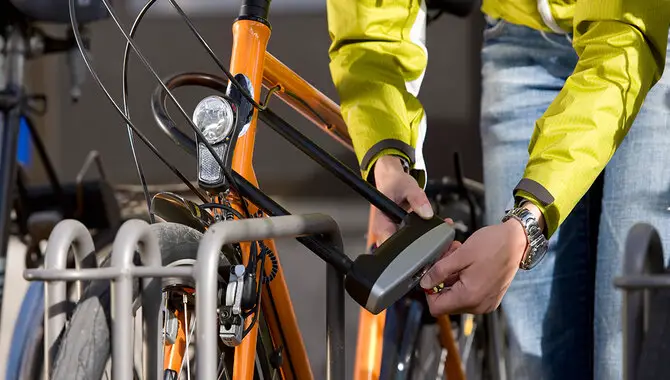
In addition to considering the level of security you need, there are other factors. To consider when choosing a bike lock. One important factor is the type of lock, as different types offer differing levels of security and convenience. For example, U-locks are generally considered the most secure, while cable locks are more convenient but less secure.
Other factors to consider include the size and weight of the lock, as well as any additional features such as anti-theft guarantees or keyless locking systems. It’s worth taking some time to research different options and weigh the pros and cons before deciding.
1. Material
Finding the right bike lock can be tricky. But don’t worry. When choosing a bike lock, you should consider the material it’s made of. Look for steel or titanium alloy locks that can resist hammer and bolt cutter attacks. Thickness matters too; thicker shackles are better at resisting leverage attacks.
Choose a secure lock based on your location’s security level and your bike’s value. Check for insurance policies, warranties, and sold secure ratings when purchasing a new lock. With these tips in mind, you’ll know your bike is protected against potential thieves.
2. Length
Choosing the right bike lock involves many factors, such as security level and portability. Length is another critical aspect to consider while selecting the right bike lock. You must choose a lock with an appropriate length depending. Where you’re locking up your bike and what part you’re locking.
For instance, U-locks with shackles around 13 mm thick or chains with thicknesses around 10 mm from brands like Kryptonite and Abus are ideal. It’s also wise to opt for sold secure-rated locks that require power tools to be cut open. So you can stay protected against potential thieves.
3. Price
When choosing the right bike lock, price is an important factor to consider. While it may be tempting to go for a cheaper option, it’s important to remember that a high-quality lock can make all the difference in keeping your bike safe and secure. The price of a bike lock will depend on factors such as its material, size, and level of security.
It’s important to find a balance between cost and effectiveness – you don’t want to spend too little and end up with a lock that’s easy to break, but you also don’t want to overspend on features you don’t need. Be sure to research and read reviews before making a purchase to choose a lock that fits your budget and provides the level of security you need for your bike.
4. Locking Mechanism
Choosing the right locking mechanism is critical in finding the best way to secure your bicycle. When it comes to selecting a locking mechanism. You should consider not only U-locks but also chain locks and cable locks. Make sure that your lock is made of high-quality materials that are resistant to cutting and leverage attacks.
Locking mechanisms with alloy frames offer great choices for portability, while steel shackles provide enhanced immovability. Don’t forget to look for additional features such as keyless entry and alarms. That can keep potential thieves away from your bike rack.
Conclusion
Choosing the right bike lock can be a daunting task, but it’s crucial to ensure the safety of your bike. You must consider your security needs, the lock type and size, and other factors like material, length, price, and locking mechanism. We recommend the State Bicycle Co. Black Label 6061 for its durability and strength.
It’s also important to know how to choose the right bike lock and the different types of locks available- keyed locks, combination locks, cable locks, U-locks, and folding locks- to make an informed decision. Remember that investing in a good quality lock is an investment in the safety of your bike.
Choose wisely and ride with peace of mind. By considering these factors and researching different brands and models, you can find the perfect bike lock to keep your bike safe and secure. Remember, investing in a quality bike lock is always worth it in the long run to prevent the hassle and expense of having your bike stolen.
Frequently Asked Questions
1.How Do You Choose The Right Bike Lock?
Ans: When choosing a bike lock, consider the level of security you need based on your location and the bike’s value. Look for locks made from high-quality materials resistant to cutting and picking. Opt for sold secure-rated locks that require power tools to be cut open for added protection.
Consider the locking mechanism, with u-locks, chain locks, and cable locks being popular choices. Remember your lock’s thickness and shackle size to ensure maximum protection against potential thieves.
2.What Are The Best Types Of Bike Locks?
Ans: The best types of bike locks are u-locks, chain locks, and cable locks. Each type offers unique features for securing your bike, so it’s important to consider the level of security you need and the locking mechanism that works best for your specific situation.
Look for locks made from high-quality materials like alloy frames and steel shackles, and opt for sold secure-rated locks that require power tools to be cut open.
3.What Are The Bike Locks Available, And Which Is The Most Secure?
Ans: Various bike locks, such as cable, chain, U-locks, and folding locks, are available. U-locks are often seen as the most secure option. Choosing a lock that fits your bike and can be attached to a fixed object is essential. Additionally, you might want to consider using a secondary locking device or removing certain parts of your bike to discourage theft.
4.How Can I Properly Use A Bike Lock To Ensure Maximum Security?
Ans: To ensure maximum security when using a bike lock, use a high-quality lock made of hardened steel, lock both the frame and wheels to an immovable object, and position the lock in a way that makes it difficult for tools to break it. Regularly inspect and maintain the lock to ensure its effectiveness.
5.Is It Worth Investing In A More Expensive Bike Lock For Added Security?
Ans: It’s recommended to spend around 10% of your bike’s value on a good lock. Investing in a more expensive, independently tested and certified bike lock can provide added security. Multiple locks, like a U-lock and cable lock combination, can also enhance protection.

I am passionate about writing blogs about bikes. I love riding my bike and love talking about it even more. My blog is the perfect place for anyone who loves biking as much as I do. Come check it out and learn some tips and tricks from me!